 
|
||||
|
|
HIGHER GROUND: THE MUSICAL |
|||
|
Although he is a gifted graphic designer and computer wiz himself, for Higher Ground Peter has brought in two comic book specialists, illustrator Patrick Barrett and colorist DC Alonso, along with co-creator and scriptwriter Gregg Ostrin to light the spark and fire up the storyline of Volume One. Upon hearing these six new songs, it’s clear that Higher Ground features a number of excellent tracks composed by Peter and there’s also a Higher Ground remake of “Another Drink”, from Peter’s 2020 solo album Tomorrow Seems Like Yesterday. The first track on Higher Ground, “Life Goes On And On” sets the scene for this tale of climate change disaster in the 22nd Century. Performed in unison by the entire cast, “Life Goes On And On” is a great introduction to the Higher Ground story line as it’s depicted in the comic book. Song two, “A Better Place” offers a plaintive plea from a cast member known as Carter. It’s one of Peter’s best songs and the vocal by Emily Bautista (playing Carter) is excellent. “Another Drink”, the Higher Ground version mentioned above is a bright spot in this otherwise sad yet enlightening tale. The fourth track, “Freedom” is a dazzling funk-rock track with a message that is also key to the Higher Ground epic. Song five, “Not Like You”, offers a glimpse into the generational divide between two of the main characters while, the anthemic closer “Hey What More Could I Do” is a perfect song that closes out this first part of Higher Ground and literally leaves us hanging on waiting for Volume Two. With the 2023 comic book release of Higher Ground: The Musical, NYC songwriting icon Peter Galperin has assembled some of his finest songs yet, all within the context of a futuristic story of disaster and climate change. Peter Galperin’s environmentally-inspired tale is a seminal concept complete with a musical soundtrack that, once downloaded will leave you in a toe-tapping mood, all the while contemplating what the future holds for planet Earth. A portentous omen depicting scenes of a potentially disastrous future for our own planet Earth, Peter Galperin’s Higher Ground is a visual and sonic delight. PeterGalperin.com / cwsbookstore.com
mwe3.com presents a new interview with
Peter Galperin: The only reminder of the pandemic in New York City that I can see are the ugly sidewalk sheds that are still standing in front of most restaurants. Barely standing. Outdoor dining is a great idea in warm weather, but I will not miss sitting in a badly built plywood box in 30 degree weather to have a meal with friends, while rats skitter under the table. On the performing side, I’m just now starting to book club gigs again and hoping that the live music audience is slowing coming back to life. mwe3: Speaking about NYC-sized musicals, you were always writing theatrical songs, especially with on the 2019 soundtrack release of Bulldozer, which got good reviews as an off-Broadway play. By the way, was Bulldozer ever considered for a movie? Were there any movies done on the life of Robert Moses, the subject of Bulldozer? Peter Galperin: I recently went to see Straight Line Crazy, a new play about Robert Moses in the Hudson Yards Shed theater. It starred Ralph Fiennes who was fantastic as always. It certainly needed some music. I think the Moses story is probably too much of a New York story to become mainstream movie material. Urban renewal in New York City is just not something most people outside of New York are very interested in. Urban planners and architects love the Moses story, but that’s a very small audience. In my show Bulldozer I used music to treat Moses as a grandiose but ultimately flawed man, in the style of a Greek myth. I think that without the drama of music, the story is too wonky for mass appeal.
Peter Galperin: I did collect comic books as a kid, so the idea of turning my new musical into a graphic novel when live performances were shut down because of Covid made perfect sense to me. And because I’ve worked as an art director, developing the show visually was a very intuitive process. I storyboarded the entire script and adapted the two-act stage musical into a 4-volume graphic novel. Each volume will be approximately 40 pages and include 5-6 songs. We’ve just released Volume One, Last of the Mannahattas in printed form, along with a six-song playlist. There are QR-codes in the comic book that link to the recorded song MP3s on our website. You can also listen on Spotify and iTunes. Eventually when all 4 volumes are printed and all the songs are recorded we’ll print a special edition containing the 4 volumes and a CD with all the songs. mwe3: I noticed that of the six tracks that can be heard on the website and one of them actually is a new version of the track “Another Drink”. What made you want to rerecord that song and how does it fit into the Higher Ground concept? Peter Galperin: I started writing songs for this concept about 5 years ago, and six songs that I’d previously recorded are now part of this 23-song project. In some cases the songs are pretty much the way I originally wrote them, and in other cases the lyrics and song structures have been modified to better fit the story. And there were a few songs that I wrote that were intended for this story that didn’t make the cut. The song “Another Drink” was always intended to be a bar room singalong. In the show it’s sung by Ezra the town elder and historian. At one point during the creative process it got cut and replaced with another song, but then it got put back in. These things happen as the show slowly takes shape, and as writers we have to be open to understanding what the story needs.
Peter Galperin: It’s actually a new genre called ‘climate-fiction’. But it’s not total fantasy; if half of the polar ice on earth melted, seas would rise about 130 feet. So, that scientific fact became the driving concept for Higher Ground: The Musical. From my fears and obsessions with what I was reading about climate change over the past 5-6 years I envisioned that 100 years from now sea levels could actually be 100 feet higher. Glaciers are melting, temperatures are increasing and the weather is getting more and more unpredictable. And yes, maybe in the future someone will be able to solve these problems, but right now rather than freak out about it, I felt the need to sing about it. That’s how I attempt to understand things that confuse me. It’s my therapy. So the story is not meant to scare people, it’s meant to create a dialogue and a discussion about the future. A future none of us are going to be around to see, but a future that will be our legacy. The script and the music go hand in hand, and both are necessary for the full story, but someone could read just the story, or listen just to the songs and get an idea of what’s going on. But the best experience would be total immersive reading and listening. mwe3: Aside from “Another Drink”, were all the songs written especially for the first volume of Higher Ground: The Musical, which you call “Last Of The Mannahattas”? Plus you mentioned there are planned to be 23 songs spread over the course of the planned four Volumes, so are all of the songs written yet? Peter Galperin: “Another Drink” and “Hey, What More Could I Do” were both previously recorded by me and have been reworked slightly for the show. There are six songs that were previously recorded in some form on my solo CDs, but the other 17 songs were written specifically for the show. Prior to Covid we had started to do table readings, so I’m pretty confident that the story can work as both a live musical and as a graphic novel series.
Peter Galperin: I worked with my show manager Aaron Grant, who managed Bulldozer, and casting agent Stephen DeAngelis to line up the singing talent. All the actors in the ensemble, (Emily Bautista, Kennedy Caughell, Steven Eng, Doug Eskew, Jeremy Kushnier, Brennyn Lark, and N'Kenge), have Broadway or London stage experience, a few have been on television shows, and all of them are incredible singers. The band members are all musicians who have worked with me for many years - Patrick Carmichael (drums) and Bryan Percivall (bass) were in the Bulldozer stage band, Reinaldo DeJesus (percussion) has played with me in New York clubs, and Robert Aaron (grand piano and sax) and I go way back to the beginning of my musical career in New York in the 1980s. I’m playing the guitar and mandolin parts, and the electric piano stuff too. We recorded the band tracks at Virtue and Vice Studios in Brooklyn with Rocky Gallo engineering (that’s also where I recorded my most recent solo CD), and the vocals were all recorded in Manhattan at Hey Pete Productions in Times Square. Because of various scheduling conflicts we had to record all of the singers individually, and then mix them to sound like they were all singing in a room together. mwe3: Tell us how you compare Higher Ground with the Bulldozer album and the latter’s off-Broadway production. Were you looking for a backer to take Higher Ground to a higher level? What are your reflections of Bulldozer, in hindsight and can you compare Bulldozer with the new Higher Ground project in the sense that they’re both theatrical?
With Higher Ground no one except me had really heard or experienced the music live before we were in the studio. The band and the singers had my demo’s and charts as a starting point, but once other musicians get involved, things like tempos, key signatures, and grooves can change. I’m always open to what the other musician’s bring to the recording process because I know that their talent is going to make the songs better and stronger. mwe3: Tell us how you met your Higher Ground co-creator Gregg Ostrin, the illustrator of the comic book Patrick Barrett, and the colorist DC Alonso and tell us something about how you worked with them on Higher Ground and how this collaboration came to fruition. Peter Galperin: Our script writer Gregg Ostrin was introduced to me by my show manager Aaron Grant. Gregg had done some script rewriting for us on Bulldozer and Aaron suggested that he and I work together on Higher Ground. I found our illustrator Patrick Barrett through Gregg, and Patrick brought in our colorist DC Alonso. Gregg and Patrick are in L.A., I’m in New York, and DC is in Spain, so we covered a good portion of the globe on this project. mwe3: How about working with Debra Barsha, who serves as the Higher Ground music director? How did she work with you and the singers and what was that collaboration like? Same with Joe Langworth, who served as the Dramaturge person. What is involved in the role of the music director and the dramaturge person? I had never heard that term dramaturge before.
mwe3: The more I listen to the first of the Higher Ground songs, the more I like them. The songs depicted in the “comic book” starts with the song “Life Goes On And On”. It sounds like a hopeful song but it really depicts the cast of characters in the story as victims. It’s a bit unclear how these people survived the climate change catastrophe in this epic tale but I guess that’s part of the fun and the upcoming parts of this epic Sci-fi saga? Peter Galperin: I don’t think of them as victims, but rather as the ultimate survivors. The opening song is about how life in all forms is always evolving. As humans we are evolving, plants are evolving, bacteria evolves, the solar system evolves. Evolving and adapting. In “Life Goes On and On” our cast is singing about how they have adapted to a new environment. The lyrics are written in a kind of continuous loop, the end of one phrase becoming the beginning of the next phrase, and so on through time representing the endless circle of life. Our characters know that they have survived through a combination of luck, timing, and the biological imperative that all living things have. We are meeting them on the eve of a superstorm that will once again test their ability to adapt and survive.
Peter Galperin: Emily Bautista sings the part of Carter the teenage daughter of the leader of our little group of survivors, and she is the first voice we hear in “Life Goes On And On,” but it’s really an ensemble piece. Each person in the 10-person cast plays a distinct character. Some are followers, some want to be leaders, and others are more individualistic. Some are positive about the current state of their world, others are less so. The tension between members of this intimate community is what drives the story forward. mwe3: Emily sings the role of Carter, who is the daughter of Raines, who is the leader of the survivors of NOMA. “A Better Place” is one of your best songs. It seems that Carter is a bit of an upstart of the group, fighting with her father. Was “A Better Place” written for the musical or when was it written? It’s very effective and expresses the frustration of the survivors. Peter Galperin: “A Better Place” was written specifically for Carter to sing as the second song in the story. It is her “I want” song and sets the story in motion. Carter is a teenager and she’s bored with her life in NOMA (North of Manhattan), and angry with her father. She blames him for the loss of her mother ten years ago when the colony first migrated to NOMA. mwe3: Is the Higher Ground version of “Another Drink” the most hopeful song in these Volume One songs? It’s interesting that song first appeared on your album Tomorrow Seems Like Yesterday. So how did you adapt it for Higher Ground? Who is singing this song? Is it Ezra? Also tell us about the book Ezra wrote about the climate catastrophe. Seems like Ezra bonded well with Carter who promises to bring his book into the future. It’s all so sad…
It documents where they’ve come from and the things that have happened to them. He’ll occasionally rummage through his book looking for inspiration and affirmation. It’s his Bible. At one point he quotes a Walt Whitman poem, and at another point he references Mike Tyson calling him “the great 20th century poet,” proving that what history remembers isn’t always accurate. Carter and Ezra have a warm, caring relationship. She sees him as a grandfatherly figure. He knows his days are winding down, something Carter refuses to believe in. mwe3: “Freedom” is one of the best up-tempo tracks on Higher Ground: The Musical. In the story, the song is sung by Quinn and Raines with some input Ezra. Is the song a good example of the unity among the survivors? Tell us something more about the song “Freedom”. Peter Galperin: “Freedom” is a R&B tune with incredible singing from N’Kenge as Quinn the enforcer, and Jeremy Kushnier as Raines the group leader, some screaming saxophone by Robert Aaron, and even a little Hammond B3 organ solo played by me. The definition of the word ‘freedom’ is a current hot topic - to some people it means the freedom from oppression, to others it means the freedom to oppress.
mwe3: My favorite song on Higher Ground is “Not Like You” features Carter singing to her Dad, Raines. Generation gap in the middle of a climate change disaster… only in the comic books! This comes right before Mallory, NOMA’s resident engineer, confronts Raines about the approaching storm. The band is smoking on this track. Emily does another great job on this song. Peter Galperin: “Not Like You” is like a battle of the bands between Carter and her father Raines. Emily and Jeremy really locked into a groove on this one. One of the things we tried to do with this story was to keep the relationships very real and show that even in the face of impending existential disaster people are can still act petty and vindictive and jealous. All those basic, and not so nice, human characteristics that have been with us since mankind learned to stand upright. What child hasn’t at one time or another despised a parent, and what parent hasn’t sometimes wished that their child was more appreciative. Parent / child relationships can be difficult even without the backdrop of climate change. And you are right, the band on this track is really swinging, especially Bryan Percivall’s nasty bass sound. mwe3: Tell us about the Volume One closer, “Hey, What More Could I Do?” Seems like the song is a good point to close out the first installment of Higher Ground. Mallory questioning Raines about his covering up of the pending storm. Tell us about the ‘u-wall’.
Raines is representative of all the bad corporate and political leaders who have dropped the ball on countering climate change. In this song he praises himself and claims that he did the best he could do, while Mallory responds that he misled and lied to the very people who trusted him the most. In the songs bridge he reveals his “dirty little secret” - the ‘U-Wall’ that was built 50 years ago to protect the city from storms and rising sea levels has been completely destroyed. Its very existence was the source of his power and control over the people of NOMA, and at the end of Volume One he admits to Mallory that it was all a lie. But he asks her to keep it a secret. She protests, but reluctantly goes along with his request.
So Raines’ leadership role in NOMA is based on the ‘myth’ of the ‘U-Wall,’ which is like any form of belief system where faithful believers must have trust in what they cannot see. Imaginary beings or invisible walls - it’s all the same religion. And he almost gets away with it, until two strangers appear in a boat offshore. You’ll have to wait for Volume Two to find out what happens next…
|
|
|||
|
||||

 One of the most enlightened singer-songwriters in America today, New York City based Peter Galperin continues making inroads with his theatrical music in 2023 with the release of Higher Ground: The Musical, a planned 4-volume/132 page ‘climate-fiction’ graphic novel. Volume One of Higher Ground, entitled “Last Of The Mannahattas”, is an intriguing first installment and it’s initially being released and presented as a comic book complete with QR codes for music downloads. There’s also a website to facilitate the downloads. With its dramatic looking front cover art, Last Of The Mannahattas even looks like the vintage DC comics of Superman and Batman fame from the 1950s and 1960s.
One of the most enlightened singer-songwriters in America today, New York City based Peter Galperin continues making inroads with his theatrical music in 2023 with the release of Higher Ground: The Musical, a planned 4-volume/132 page ‘climate-fiction’ graphic novel. Volume One of Higher Ground, entitled “Last Of The Mannahattas”, is an intriguing first installment and it’s initially being released and presented as a comic book complete with QR codes for music downloads. There’s also a website to facilitate the downloads. With its dramatic looking front cover art, Last Of The Mannahattas even looks like the vintage DC comics of Superman and Batman fame from the 1950s and 1960s. 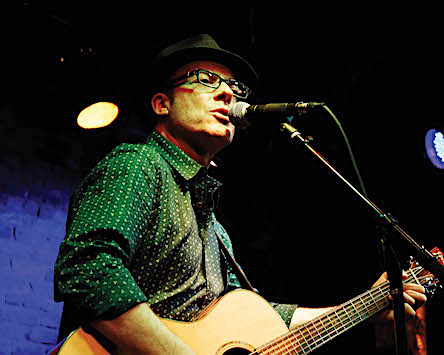 mwe3: How have things been going for you up in New York City? Have the last traces of the pandemic finally being eradicated and is the city back to normal following the lockdown period in 2020-21? Also tell us something new about your current situation in NYC as it pertains to you as a composer and performer.
mwe3: How have things been going for you up in New York City? Have the last traces of the pandemic finally being eradicated and is the city back to normal following the lockdown period in 2020-21? Also tell us something new about your current situation in NYC as it pertains to you as a composer and performer. 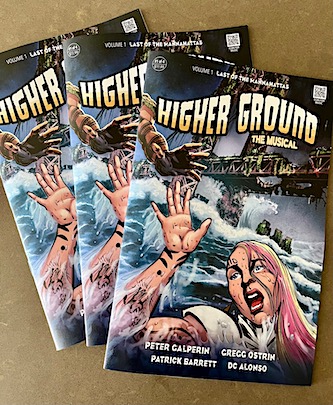
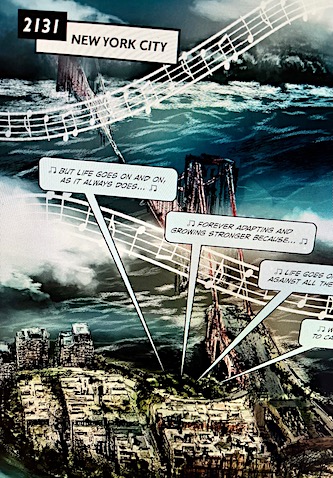 mwe3: The Higher Ground concept is very frightening overall. Even though the story takes place in 2131, is it mostly Science Fiction to presume that climate change will one day destroy New York City? As a Sci-Fi thriller based on a futuristic time in history, it is convincing, but is the project mostly to serve as a vehicle for your music? Do you think audiences will pick up on the comic book concept of Higher Ground?
mwe3: The Higher Ground concept is very frightening overall. Even though the story takes place in 2131, is it mostly Science Fiction to presume that climate change will one day destroy New York City? As a Sci-Fi thriller based on a futuristic time in history, it is convincing, but is the project mostly to serve as a vehicle for your music? Do you think audiences will pick up on the comic book concept of Higher Ground? 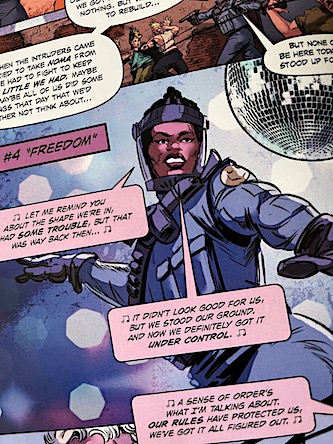 mwe3: The singers you feature on “Last Of The Mannahattas” are all excellent. Tell us how you assembled the cast of singers and tell us about the band backing the singers. Was the band the same that played on your most recent solo albums This Burning Sun and Tomorrow Seems Like Yesterday? Who plays the instruments, where were the tracks recorded and mixed, who produced and I presume you wrote and arranged all the music?
mwe3: The singers you feature on “Last Of The Mannahattas” are all excellent. Tell us how you assembled the cast of singers and tell us about the band backing the singers. Was the band the same that played on your most recent solo albums This Burning Sun and Tomorrow Seems Like Yesterday? Who plays the instruments, where were the tracks recorded and mixed, who produced and I presume you wrote and arranged all the music? 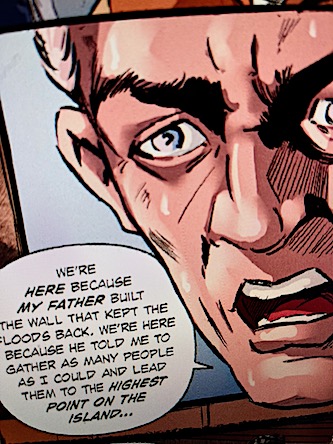 Peter Galperin: Two very different situations. We recorded the Bulldozer original cast album after the run of the show. The singers and the band knew the music really well because we had been playing it every night for about 3 months straight. For the Bulldozer cast album we basically recorded what we had performed in the show.
Peter Galperin: Two very different situations. We recorded the Bulldozer original cast album after the run of the show. The singers and the band knew the music really well because we had been playing it every night for about 3 months straight. For the Bulldozer cast album we basically recorded what we had performed in the show. 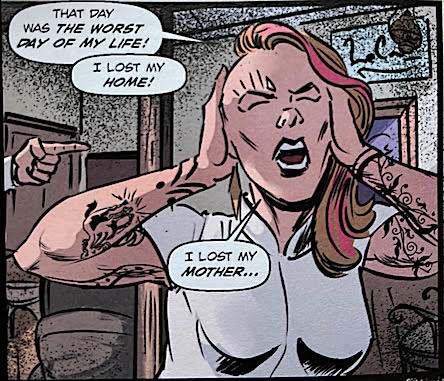 Peter Galperin: Joe and Debra were invaluable to us. We had monthly zoom meetings for about a year with both of them. A dramaturge is like an editor, so Joe worked as both our script editor and as a stage director helping us with the story arc, character development, momentum, pacing and envisioning how the show might look. Debra worked with me on developing the song structure and lyric refinement. During that year working with them, the intent was always to be developing a stage show. The graphic novel adaptation came later when it became apparent that we weren’t going to be able to mount a stage production anytime soon.
Peter Galperin: Joe and Debra were invaluable to us. We had monthly zoom meetings for about a year with both of them. A dramaturge is like an editor, so Joe worked as both our script editor and as a stage director helping us with the story arc, character development, momentum, pacing and envisioning how the show might look. Debra worked with me on developing the song structure and lyric refinement. During that year working with them, the intent was always to be developing a stage show. The graphic novel adaptation came later when it became apparent that we weren’t going to be able to mount a stage production anytime soon. 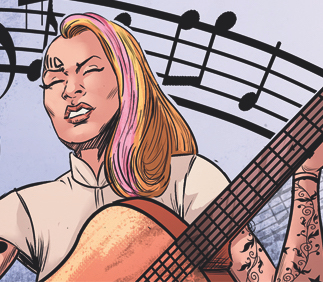 mwe3: “Life Goes On And On” features singer Emily Bautista. She’s very effective. It sounds like she really picked up on the story. Tell us about the singers on “Life Goes On And On” and how they connected together. So it’s a hopeful song right?
mwe3: “Life Goes On And On” features singer Emily Bautista. She’s very effective. It sounds like she really picked up on the story. Tell us about the singers on “Life Goes On And On” and how they connected together. So it’s a hopeful song right? 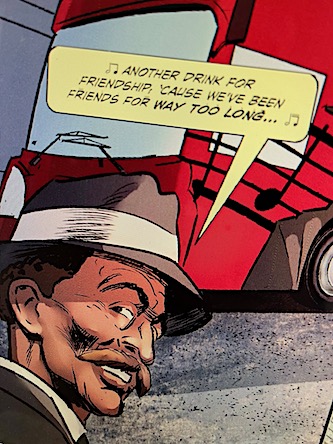 Peter Galperin: As sung by Ezra “Another Drink” is nostalgic. The oldest of the group, he is the only one who remembers the way the world used to be. The group looks to him for wisdom, although he warns them that “just because I’m old and wrinkled, doesn’t make me all knowing.” In this future world where life has once again become primitive, Ezra keeps a scrapbook of history. It’s filled with old newspaper clippings, postcards, drawings and writings.
Peter Galperin: As sung by Ezra “Another Drink” is nostalgic. The oldest of the group, he is the only one who remembers the way the world used to be. The group looks to him for wisdom, although he warns them that “just because I’m old and wrinkled, doesn’t make me all knowing.” In this future world where life has once again become primitive, Ezra keeps a scrapbook of history. It’s filled with old newspaper clippings, postcards, drawings and writings.  So in this song we’ve got people singing together, but with opposite understandings of what they are singing about. Quinn and Raines want to control the group, the others - Ezra, Lucas, Sage and Mallory - are just happy to be alive and more than willing to give thanks, credit, and control to Quinn and Raines.
So in this song we’ve got people singing together, but with opposite understandings of what they are singing about. Quinn and Raines want to control the group, the others - Ezra, Lucas, Sage and Mallory - are just happy to be alive and more than willing to give thanks, credit, and control to Quinn and Raines. 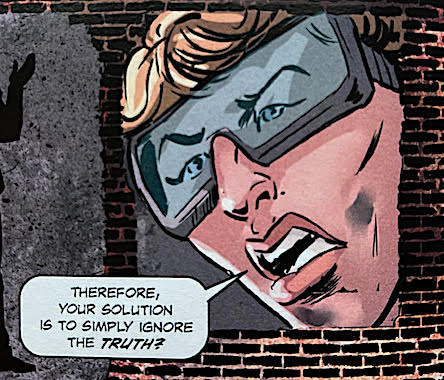 Peter Galperin: I originally recorded this song a few years ago as “Hey, What Can You Do,” but for the show I modified the title to be “Hey, What More Could I Do,” and completely reworked the verse lyrics and structure. But the basic idea of the song is still the same - an authoritative figure lamenting that the worsening state of the world is not their fault. Sounds familiar, right!
Peter Galperin: I originally recorded this song a few years ago as “Hey, What Can You Do,” but for the show I modified the title to be “Hey, What More Could I Do,” and completely reworked the verse lyrics and structure. But the basic idea of the song is still the same - an authoritative figure lamenting that the worsening state of the world is not their fault. Sounds familiar, right! 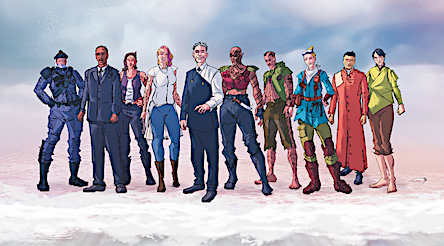 As if putting up a wall could stop the relentless pounding of the rising sea… Did it occur to anyone involved that water always finds its path, blocking it in one area just means flooding other areas. But I guess permanently flooding New Jersey and Brooklyn is a risk that the planners of the ‘U-Wall’ are willing to take.
As if putting up a wall could stop the relentless pounding of the rising sea… Did it occur to anyone involved that water always finds its path, blocking it in one area just means flooding other areas. But I guess permanently flooding New Jersey and Brooklyn is a risk that the planners of the ‘U-Wall’ are willing to take.